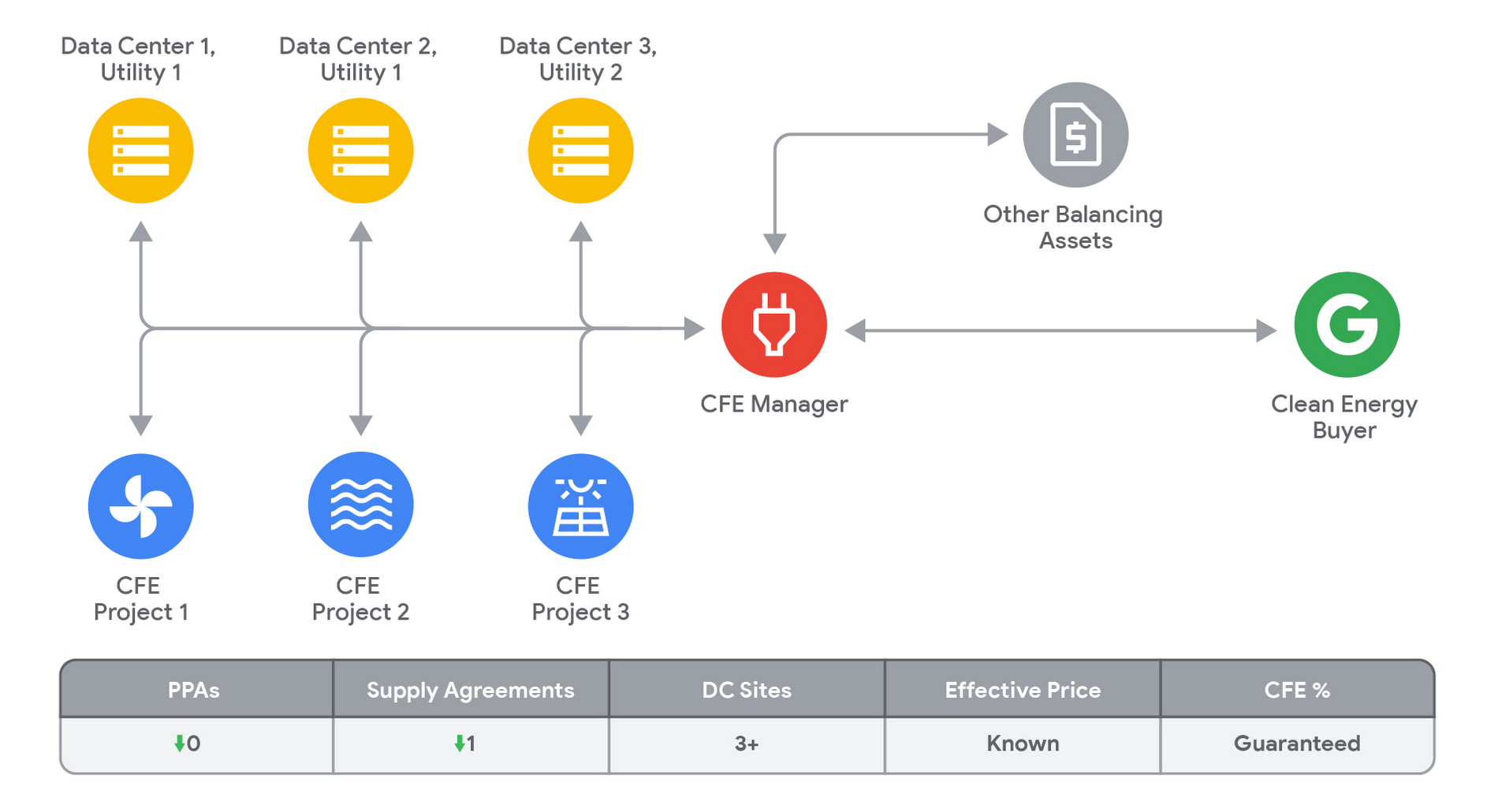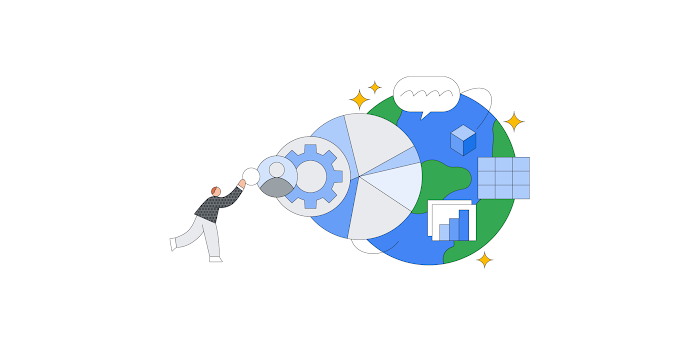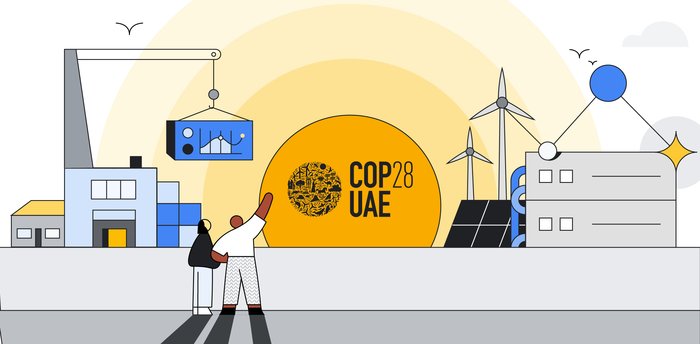A new clean energy purchasing model to drive decarbonization
Amanda Peterson Corio
Global Head of Data Center Energy
When Google set out to achieve 24/7 carbon-free energy (CFE) in our operations by 2030, we committed to share insights and lessons that could help others move in the same direction. In 2021 we published a detailed methodology for 24/7 CFE, and earlier this year we released a roadmap for policymakers to enable 24/7 CFE for all and accelerate grid-level decarbonization. Today, we’re releasing a white paper that details our experience with a new energy transaction model that we call a Carbon-free Energy (CFE) Manager. We hope the insights in this white paper will support organizations' move to source round-the-clock clean power.
Google was a pioneer of corporate Power Purchase Agreements (PPAs), which have since become the most prominent approach for corporations to procure clean energy. But PPAs are complex instruments that come with several forms of risk that can be hard for buyers to manage. PPAs are also fundamentally a work-around; they are a way to access clean energy where it is not otherwise directly available from an electricity supplier.
As we considered how to move toward 24/7 carbon-free energy, we reached out to our energy service providers to discuss solutions. We learned that there weren’t any round-the-clock carbon-free energy products being offered, so we worked with our energy providers to create them.
A CFE Manager is an energy service provider that an energy buyer tasks with assembling a portfolio of CFE projects. Compared to an energy user like Google signing its own PPAs, the CFE Manager model reduces buyers’ transaction costs, shifting PPA risks to the entity best suited to manage them (the energy service provider), and can lead to greater decarbonization of hourly electricity consumption — all at a competitive price. The model is also scalable: contracts can be designed so that the portfolio of clean energy projects keeps pace with a buyer’s growing electricity demand.
Our paper shares three case studies where Google recently signed CFE Manager agreements — in Virginia, Germany, and California — and discusses some contractual terms and issues that buyers pursuing these agreements should consider. In each of these cases, we worked with our energy service provider to create a ready-made solution for carbon-free electricity supply that can be adopted by other clean energy buyers. These agreements represent a new energy service model that can support a customer’s journey toward full decarbonization of their electricity demand while accelerating the decarbonization of electricity grids.


A CFE Manager model for energy purchasing enables buyers to sign a single supply agreement for multiple facilities, avoid some risks associated with PPAs, and secure guaranteed carbon-free energy matching.
As Google progresses toward our goal of operating on 24/7 CFE by 2030, we will continue to support others on their own clean energy journeys, which is why we’ve released this new paper today. It’s also why we’re advocating for policies to accelerate the decarbonization of grids around the world and why we and our partners recently launched the global 24/7 Carbon-free Energy Compact — a set of commitments and actions from energy buyers, energy suppliers, governments, system operators, solutions providers, investors, and other organizations to advance 24/7 CFE.
Direct PPA contracting by end users will continue to play an important role in the transition to a carbon-free grid. But for end users for whom PPAs are not practical or desirable, we hope the CFE Manager model will be a helpful tool to support and expand CFE procurement. We stand ready to work with energy suppliers, utilities, and other clean energy buyers to scale this new energy supply model and help advance 24/7 CFE for all.



